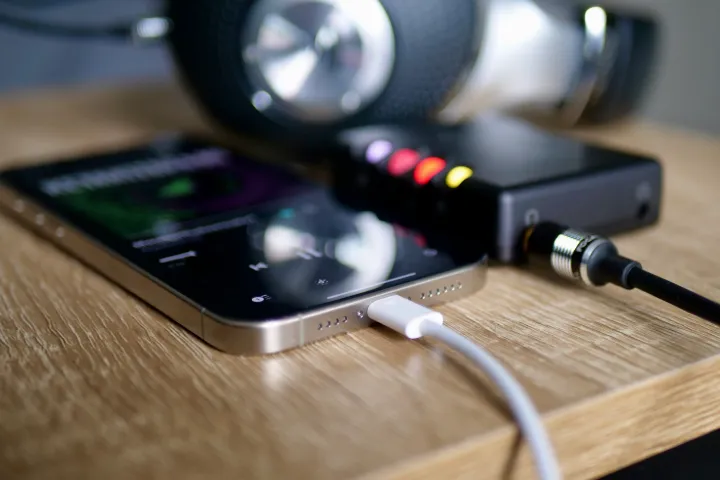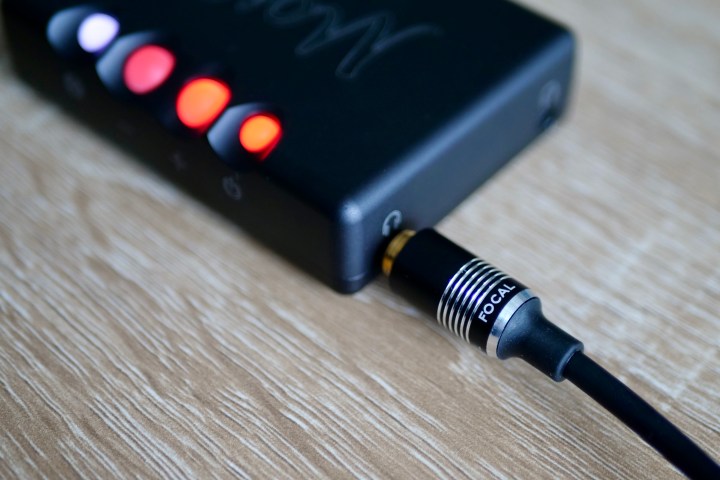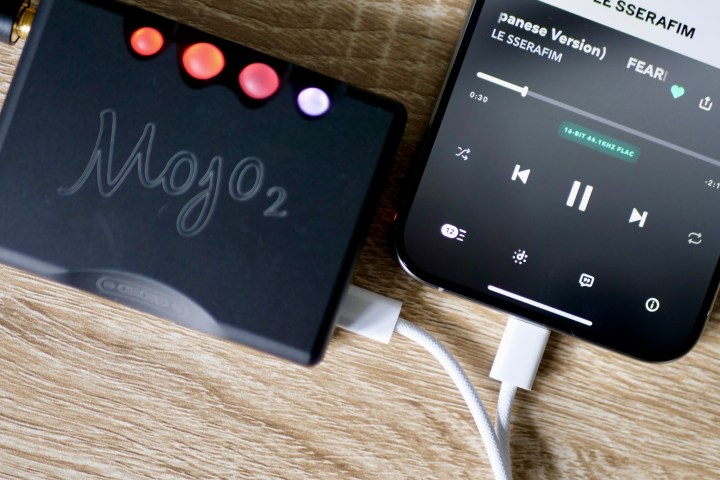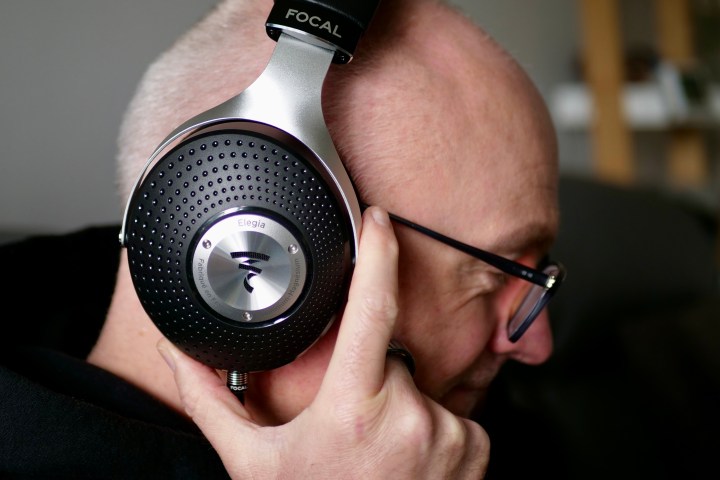
A series of events and a carefree financial decision have led me to fall in love with a gadget I haven’t used for several years — and it all started the day Apple decided to leave the old Lightning connection behind and use USB-C on the iPhone 15 series instead.
But to tell the story, I will have to go back even further in time first. Let me explain.
A gadget I loved but had forgotten about

That story begins not with the iPhone but with a digital-to-analog converter, or DAC. At the start of 2022, I reviewed the Chord Mojo 2 DAC — a gadget that fits in between your music player and headphones, enhancing the sound and providing a huge amount of customization, too. It made my iPhone 13 Pro sound glorious, but to do so, it needed the Lightning-to-USB Camera Adaptor dongle connected to another dongle, this time a USB-A-to-Micro-USB. It was a lot of cables and connectors to deal with, and that was before adding the cable to the headphones. There are some special Mojo-compatible Lightning-to-USB-C cables out there, but buying another cable to replace existing cables I already owned seemed pointless.
I mostly used the Chord Mojo 2 with a pair of Focal Stellia headphones, kindly loaned to me by Focal. The $3,000 headphones are superb and probably the best I’ve ever used, apart from the even more expensive Focal Utopias I once demoed and practically refused to take off my head they were so sublime. Having the Stellia paired with the Chord Mojo 2 right there in my home for an extended period was amazing. I actually set aside time to sit down and listen to music, something I’d forgotten how to do with Bluetooth headphones, which seem to encourage activity.
When the time came to return the Focal Stellia’s to the company, I was very sad to see them go, and, looking back, it marked the end of those days of relaxing with headphones on, exploring both new and familiar music — sometimes just to experience how it sounded. I still used the Mojo 2 and its stupid collection of cables and dongles with my own Sennheiser HD660 headphones, but I’ve never really loved them like I did the Focal Stellia. Time passed, and the cable-tastic Mojo 2 was used less and less.
USB-C comes to the iPhone 15

Apple announced the iPhone 15 series in September 2023, and I chose the iPhone 15 Pro Max as the model I’d use for the next year or so, but the addition of USB-C never really appealed at first due to the lack of true fast charging. But a few weeks into ownership, I remembered the Chord Mojo 2 and its tangle of cables. Would it work without all that mess now? Using the attractive braided USB-C-to-USB-C cable that comes included with the iPhone 15 Pro Max, I tried it out.
Indeed, all that’s needed to connect the wonderful Mojo 2 to the iPhone 15 — regardless of which one — is a USB-C cable. The whole dongle nightmare is over, and it’s not only a lot easier, but it’s also a lot neater, too. It encouraged me to find a pair of wired headphones and see how it sounded, but it also reminded me that the Focal Stellia were long gone. Like many, my headphone life has been wireless for some time, and any new pairs I’ve purchased or reviewed recently don’t have cables.
This was all happening around Black Friday, which is never a good time to be considering any new luxury product that you don’t really need. Perhaps thankfully, the Focal Stellia rarely see a meaningful discount, at least not at the level I could justify them. But I was seeing another pair of Focal headphones around with a temptingly substantial discount — the Focal Elegia. I like closed-back headphones, and comments online about the sound indicated they’d respond well to tuning with a device like the Mojo 2. Sure, I’d never heard the Elegia, making it a risky purchase, but I wasn’t going to let that stop me.
This wouldn’t have happened without USB-C

I found a new set of Focal Elegias for just 320 British pounds, which is about $400 and less than half their original price. I knew they wouldn’t challenge the Stellia’s, but it would still be money well spent if they had even a tenth of the emotional punch. They certainly have the same wonderful presentation and packaging as the Stellia’s, but out of the box, the sound just wasn’t quite there. I couldn’t put my finger on it, but they were a bit … lifeless.
Plugging the single USB cable into the iPhone and the Mojo 2 felt oddly special, having not done so for almost a year at this point, as did connecting the Elegia’s oversized 3.5mm jack to the opposite side. This is where I fell for the Mojo 2 again, as playing with the equalizer to subtly change the sound made a massive difference to how the headphones sounded. I’d found the extra sub bass that was missing, and adjusting the crossfeed helped widen the soundstage — complementing the wonderful midrange and vocal performance that were already there.

Has the Mojo 2 made the Elegia’s sound like the Stellia? No, of course not, but its versatility has allowed me to overcome the slightly disappointing out-of-the-box sound. It has helped me exorcise the ghost of the amazing Stellia’s, a set of headphones I understand I may never hear again, and to rediscover the joy of just sitting down and listening to music. While I’ve written mostly about how the Mojo 2 and the Focal Elegia’s sound, I wouldn’t have found any of it out if Apple hadn’t ditched the Lightning cable for a USB-C.
Fast charging may not have arrived with USB-C, but something equally helpful has: convenience. Fewer cables and dongles make the Mojo 2 specifically more friendly to own and use, and it’s likely the same for various other accessories that once relied on additional parts to operate. It has taken a while, but I’ve finally found a reason to rejoice about the arrival of USB-C on the Apple iPhone.
Editors’ Recommendations
Credit: Source link


Comments are closed.